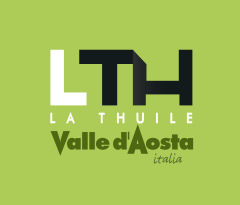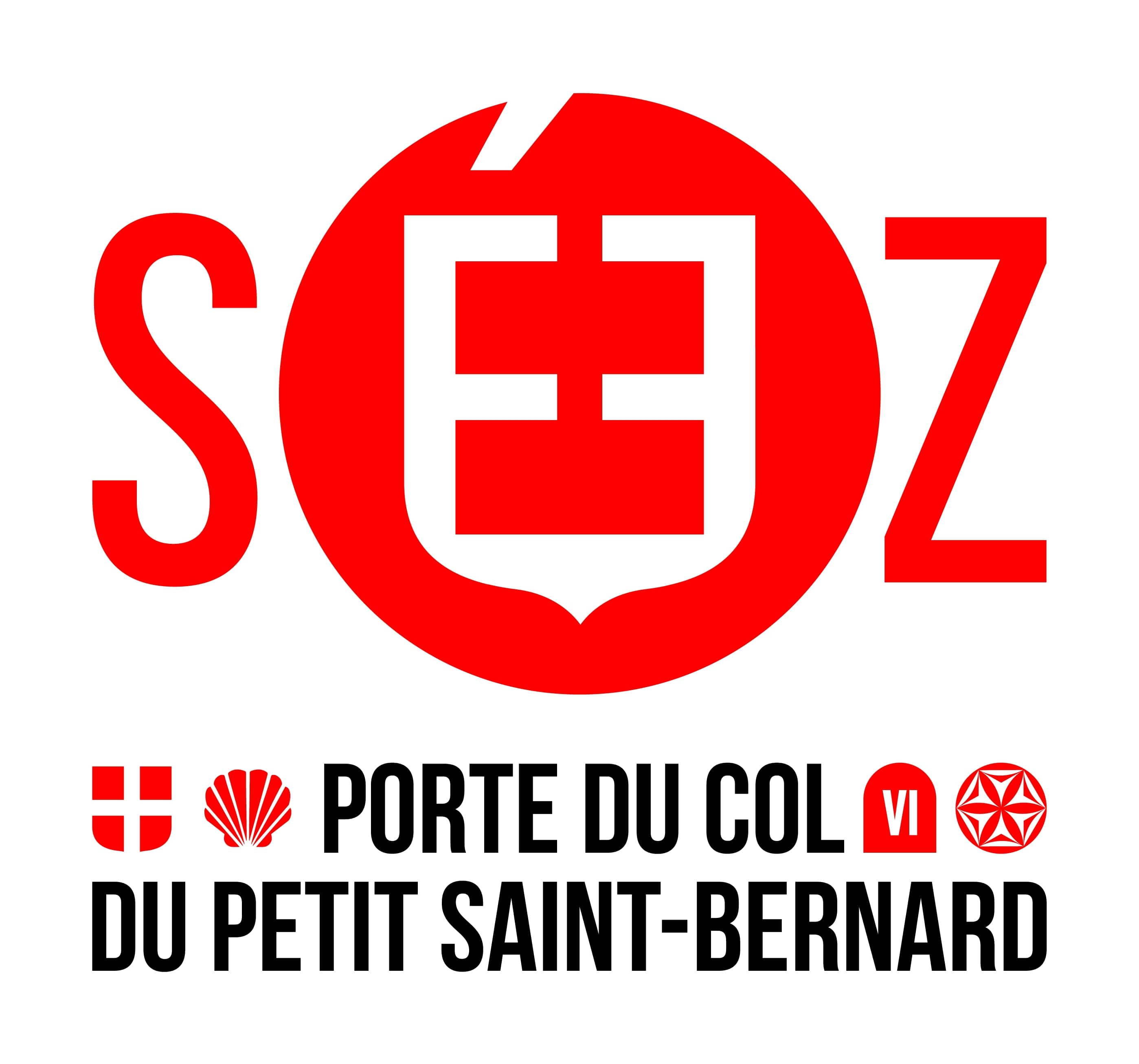Cross-border trail in the footsteps of history (from: Saint-Germain)
Cross-border trail in the footsteps of history (from: Saint-Germain)
Medium
Difficulty5h
Duration15,8km
Distance+925m
Positive Elevation-784m
Negative ElevationEmbed this item to access it offline
A walking itinerary for true trekking enthusiasts that on the French side follows the Via Romana, an ancient path that connected Vienna to Milan and still preserves paved stretches and low walls, and on the Italian side leads along mountain paths that also follow the Way of Saint Martin of Tours, one of the Council of Europe's Cultural Routes.
In between we cross the surprising Little St Bernard Pass (Col du Petit-Saint-Bernard), which has been significant since ancient times for its strategic position and is therefore rich in historical evidence but also in panoramas and environments where mountain nature is the great protagonist.
In between we cross the surprising Little St Bernard Pass (Col du Petit-Saint-Bernard), which has been significant since ancient times for its strategic position and is therefore rich in historical evidence but also in panoramas and environments where mountain nature is the great protagonist.
Description
Leave your car at the car park in the village of Saint-Germain, go up the road near the chapel and take the Roman road on the left, following the yellow-coloured signposts indicating Voie Romaine towards Petit-Saint-Bernard pass. At the village of Les Chavonnes, follow the direction of the Petit-Saint-Bernard hospice. After crossing Le Pontet, follow the route under the national road, still towards the Petit-Saint-Bernard hospice. Reach the pass from behind the hospice and follow the road past the botanical garden, the column of Jupiter, the Cromlech and the Mansio Joux (Path of Remembrance for the discovery of the Colle plain). Follow trail no. 9 downhill for about 5 kilometres and 530 m of altitude difference leading to the village of Pont Serrand. From here, always downhill and following the yellow markings of trail number 9, you will reach La Thuile.
Departure : Saint-Germain (Séez)
Arrival : La Thuile
21 points of interest

Small patrimony
The mill of Saint-Germain
At the entrance to the small village is an old watermill dating back to the end of the 17th century. On the outside, one can appreciate the stone building and the large wooden wheel, the result of a restoration strongly desired by the locals between 1987 and 1989.
Inside are the millstone mechanisms - today made of metal but once made entirely of wood - the bread oven and a small museum dedicated to rural life in the past.
In the summer, bread is still baked as it once was: the oven today, as then, is lit on the eve of baking using wood brought in by the locals. Once baked, the bread was stored by air-drying it on special wooden racks suspended from the ground to protect it from mice. To consume it, it was necessary to break it into pieces and soften it in soups, milk, wine or broth.
Inside are the millstone mechanisms - today made of metal but once made entirely of wood - the bread oven and a small museum dedicated to rural life in the past.
In the summer, bread is still baked as it once was: the oven today, as then, is lit on the eve of baking using wood brought in by the locals. Once baked, the bread was stored by air-drying it on special wooden racks suspended from the ground to protect it from mice. To consume it, it was necessary to break it into pieces and soften it in soups, milk, wine or broth.

Panorama
Roman road
Construction of the great Roman road linking Milan to Vienne, in the Rhône Valley, was started under Julius Caesar around 45 B.C. and was completed around 2 or 3 A.D., with the Little Saint Bernard Pass as its culminating point.
Its route used large sections of an old caravan route already used by the Salassi and is a masterpiece of Roman architecture. The Romans followed the most direct route to the hill, without any hairpin bends to dampen the slope, improving the roadbed with beaten earth and often with stone slabs (still partly visible today), on widths varying from 3 to 5 metres. This is why the Greek geographer Strabo, around 18 A.D., describes it as a practicable route with carts for the most part.
The road was a communication route of primary importance that allowed goods and people to cross the Alps at a time when the decidedly milder climate allowed them to pass practically all year round at the 2100 metres of the pass.
On the Italian side, the current road crosses it several times. On the French side, it descends on the right bank of the torrent du reclus and reaches the village of Saint-Germain.
Its route used large sections of an old caravan route already used by the Salassi and is a masterpiece of Roman architecture. The Romans followed the most direct route to the hill, without any hairpin bends to dampen the slope, improving the roadbed with beaten earth and often with stone slabs (still partly visible today), on widths varying from 3 to 5 metres. This is why the Greek geographer Strabo, around 18 A.D., describes it as a practicable route with carts for the most part.
The road was a communication route of primary importance that allowed goods and people to cross the Alps at a time when the decidedly milder climate allowed them to pass practically all year round at the 2100 metres of the pass.
On the Italian side, the current road crosses it several times. On the French side, it descends on the right bank of the torrent du reclus and reaches the village of Saint-Germain.

Fauna
The environments of the Black Grouse
At the upper limit of the arboreal vegetation, where shrubs such as bilberry, rhododendron, juniper and green alder endure before making way for the alpine meadows, the black grouse (Tetrao tetrix) can be found, preferring the cool, moist northern slopes.
It is a Galliform of the Tetraonidae family that is easy to recognise but not so easy to see!
The male is black with white parts in the underwing and undertail and red caruncles above the eyes. The tail is unmistakable with external lyre-shaped feathers. The female is similar but the black colour is replaced by a more mimetic reddish-brown.
Its behaviour during the breeding season is quite peculiar: the males make veritable parades in arenas called lek in front of the females, assuming strutting postures, beating their wings, hopping with open wings and sometimes even engaging in physical confrontation.
Its characteristic warbling-like cry can be heard from a great distance, emitted especially during the mating period.
The species is threatened by environmental changes, hunting and human disturbance. For this reason, off-piste skiing is regulated and the access to some areas is prohibited.
It is a Galliform of the Tetraonidae family that is easy to recognise but not so easy to see!
The male is black with white parts in the underwing and undertail and red caruncles above the eyes. The tail is unmistakable with external lyre-shaped feathers. The female is similar but the black colour is replaced by a more mimetic reddish-brown.
Its behaviour during the breeding season is quite peculiar: the males make veritable parades in arenas called lek in front of the females, assuming strutting postures, beating their wings, hopping with open wings and sometimes even engaging in physical confrontation.
Its characteristic warbling-like cry can be heard from a great distance, emitted especially during the mating period.
The species is threatened by environmental changes, hunting and human disturbance. For this reason, off-piste skiing is regulated and the access to some areas is prohibited.

Small patrimony
Redoubt of the Traversette
In a dominant position on the French side of the Petit Saint Bernard Pass lies the Traversette fort. Strategically located on a rocky spur at an altitude of about 2,400 metres, it was used for the military surveillance of the area.
The present fort was built in 1891 on the ruins of an old Sardinian fort that was destroyed during the French Revolution. The fort was initially only occupied in the summer, and later throughout the year. Due to its location, it was considered ideal for training troops in difficult mountain conditions.
During the Second World War, the fort assumed a very important role. In June 1940, it was defended by the 70th BAF (Alpine Fortress Battalion), commanded by second lieutenant Desserteaux. It was then occupied by Italian, then German troops, and finally liberated after bitter fighting in April 1945.
Today in ruins, it is located directly on the slopes of the Espace San Bernardo international ski area, which unites the resorts of La Thuile in Aosta Valley and La Rosière in Haute-Savoie.
The present fort was built in 1891 on the ruins of an old Sardinian fort that was destroyed during the French Revolution. The fort was initially only occupied in the summer, and later throughout the year. Due to its location, it was considered ideal for training troops in difficult mountain conditions.
During the Second World War, the fort assumed a very important role. In June 1940, it was defended by the 70th BAF (Alpine Fortress Battalion), commanded by second lieutenant Desserteaux. It was then occupied by Italian, then German troops, and finally liberated after bitter fighting in April 1945.
Today in ruins, it is located directly on the slopes of the Espace San Bernardo international ski area, which unites the resorts of La Thuile in Aosta Valley and La Rosière in Haute-Savoie.

Small patrimony
The four winds and statue of Saint Bernard of Menthon
Just beyond the hospice, overlooking the French side of the Petit St Bernard Pass, is a small stone construction resembling a garret with four niches, one on each side. It was built by Abbé Chanoux, who was rector of the hospice for 49 years from 1860 until his death, to meditate while sheltered from the wind, regardless of its direction. It was later used by customs officers as a lookout post for smugglers coming up from the valley.
Next to it is an imposing statue of Saint Bernard of Menton placed in 1902 by Abbot Chanoux on a tuff pedestal over 12 m high. The figure of Saint Bernard is fundamental to the history of the Col: it was he who in 1034 received the mandate to build the hospice. The saint, depicted with his index finger pointing towards Italy to indicate the way to cross the pass, embodied, then as now, the essence of hospitality. During the Second World War, the finger was lost, leaving an outstretched fist in a more vengeful-looking gesture.
Next to it is an imposing statue of Saint Bernard of Menton placed in 1902 by Abbot Chanoux on a tuff pedestal over 12 m high. The figure of Saint Bernard is fundamental to the history of the Col: it was he who in 1034 received the mandate to build the hospice. The saint, depicted with his index finger pointing towards Italy to indicate the way to cross the pass, embodied, then as now, the essence of hospitality. During the Second World War, the finger was lost, leaving an outstretched fist in a more vengeful-looking gesture.

Small patrimony
Little Saint Bernard hospice
The Petit-Saint-Bernard hospice remains today a symbol of hospitality for all those who travel this route through the mountains. Its history is linked to the figure of Saint Bernard, archdeacon of Aosta, who around 1050 had a hospice and church built and served by religious monks dependent on the monastery of Saint Peter in the Swiss Valais.
The hospice was entrusted in 1113 to the order of the monks of Saint-Gilles of Verrès. A new hospice was built at the behest of Saint Peter II, archbishop of the Tarentaise Valley, a little further south, in its present location.
The building experienced alternating periods of decay and prosperity. From 1752, its name was linked to the Order of Saint Maurice and Saint Lazarus, and the crusader emblem of the Mauritian Order appeared on the façade.
In 1860, Abbot Chanoux arrived and contributed to guaranteeing hospitality for 50 years, both in summer and winter. In 1920, the hospice recorded a record number of passages, over 21,000 of which more than 500 in winter!
During the Second World War, the building was devastated and lay in ruins for a long time. Since the summer of 1995, thanks to cooperation between Italian and French Rotary clubs, a renovated and equipped hospice with a restaurant, rooms and tourist information point has once again become the soul of the Petit-Saint-Bernard Pass.
The hospice was entrusted in 1113 to the order of the monks of Saint-Gilles of Verrès. A new hospice was built at the behest of Saint Peter II, archbishop of the Tarentaise Valley, a little further south, in its present location.
The building experienced alternating periods of decay and prosperity. From 1752, its name was linked to the Order of Saint Maurice and Saint Lazarus, and the crusader emblem of the Mauritian Order appeared on the façade.
In 1860, Abbot Chanoux arrived and contributed to guaranteeing hospitality for 50 years, both in summer and winter. In 1920, the hospice recorded a record number of passages, over 21,000 of which more than 500 in winter!
During the Second World War, the building was devastated and lay in ruins for a long time. Since the summer of 1995, thanks to cooperation between Italian and French Rotary clubs, a renovated and equipped hospice with a restaurant, rooms and tourist information point has once again become the soul of the Petit-Saint-Bernard Pass.

Lake
Verney lake
Lake Verney is the largest natural alpine lake in the Aosta Valley. Of glacial origin, it is located at an altitude of 2,088 m between the Bec des Rousses, a promontory of the Petit St Bernard, and Mount Chaz Dura.
The shores of the lake are colonised by hygrophilous vegetation that includes valuable botanical varieties such as eriophiles, sedges and rushes as well as sphagnum, a typical species of peat bogs. On the sides, the work of nature has left moraine deposits rich in resurgences, the perfect habitat for primroses and saxifrages.
In the distant past, over 2000 years ago, the people of Salasso considered these waters sacred: they were used to bless fields, unions and children, to propitiate a fruitful summer or a benevolent winter. When Salaxian leaders returned victorious from a battle, they offered the swords of their fallen adversaries to Graio, god of war and rocks, as a sign of thanks.
Today, Lake Verney is a favourite destination for many tourists as well as a fishing reserve. You can walk around its entire perimeter with a comfortable walk of about 45 minutes and by climbing further you can reach the Upper Verney Lake in about half an hour.
The shores of the lake are colonised by hygrophilous vegetation that includes valuable botanical varieties such as eriophiles, sedges and rushes as well as sphagnum, a typical species of peat bogs. On the sides, the work of nature has left moraine deposits rich in resurgences, the perfect habitat for primroses and saxifrages.
In the distant past, over 2000 years ago, the people of Salasso considered these waters sacred: they were used to bless fields, unions and children, to propitiate a fruitful summer or a benevolent winter. When Salaxian leaders returned victorious from a battle, they offered the swords of their fallen adversaries to Graio, god of war and rocks, as a sign of thanks.
Today, Lake Verney is a favourite destination for many tourists as well as a fishing reserve. You can walk around its entire perimeter with a comfortable walk of about 45 minutes and by climbing further you can reach the Upper Verney Lake in about half an hour.

Small patrimony
World War 2 bunker
This military construction was part of the Western Alpine Wall defending the Italian borders in the great defence project that spanned the entire Alpine arc. This particular post was known as the Vallo Alpino del Littorio (Littoria refers to the name of La Thuile in fascist times).
The two entrances and a cast-iron canopy that served as an observatory are still visible. It is small and designed for two people armed with machine guns with a firing view in four directions.
All the defences and barricades built at the Petit St Bernard Pass were intended to stop the French advance during the Second World War, which affected these territories more than other areas because the passage was easier here.
In the second half of the 1930s, the construction of new fortifications and the adaptation of existing ones began. Counter-tank defence structures were installed on both sides of the road, in correspondence with the natural watershed of the Col and subsequently numerous bivouacs, artillery observation posts, bunkers, the Chaz Duraz and Monte Belvedere forts and the Ridotta della Traversette.
Around mid-August 1939, when the winds of war began to blow strongly, a contingent of soldiers was sent to guard the borders and defend the homeland. On 1 September, war was declared and nothing was ever the same again...
The two entrances and a cast-iron canopy that served as an observatory are still visible. It is small and designed for two people armed with machine guns with a firing view in four directions.
All the defences and barricades built at the Petit St Bernard Pass were intended to stop the French advance during the Second World War, which affected these territories more than other areas because the passage was easier here.
In the second half of the 1930s, the construction of new fortifications and the adaptation of existing ones began. Counter-tank defence structures were installed on both sides of the road, in correspondence with the natural watershed of the Col and subsequently numerous bivouacs, artillery observation posts, bunkers, the Chaz Duraz and Monte Belvedere forts and the Ridotta della Traversette.
Around mid-August 1939, when the winds of war began to blow strongly, a contingent of soldiers was sent to guard the borders and defend the homeland. On 1 September, war was declared and nothing was ever the same again...

Small patrimony
Cromlech
The word cromlech derived from the Celtic language (crom means circle and lech means stones) describes exactly what it means: 46 stelae are aligned in a slightly elliptical circle with a diameter of 84x72 metres. Each stele is embedded in the ground at a distance of about 3-4 metres from the others.
This sacred place was created by the Celts at a time around 2700 years ago, when the 'cult of the stones' was practised. In Tir Na Mor Art (Terra Della Grande Orsa, the Land of the Great Bear, the Valle d'Aosta of Celtic times), Vestals and Druids were at home, who studied celestial phenomena and practised rituals here.
The cromlech is oriented with the Summer Solstice: on the longest days of the year when the sun turns to set, the shadow of the two peaks behind the Sacred Circle is reflected on the ground and embraces its perimeter, leaving only the centre of the circle to the sun.
Wars and atmospheric adversities have led to the gradual degradation of this place. Consider that from 1856 to 2012, the Hill Road cut through the Cromlech exactly in the middle and a dozen or so stelae were removed, which to the ancient Salassi would have been a horrible sacrilege!
This sacred place was created by the Celts at a time around 2700 years ago, when the 'cult of the stones' was practised. In Tir Na Mor Art (Terra Della Grande Orsa, the Land of the Great Bear, the Valle d'Aosta of Celtic times), Vestals and Druids were at home, who studied celestial phenomena and practised rituals here.
The cromlech is oriented with the Summer Solstice: on the longest days of the year when the sun turns to set, the shadow of the two peaks behind the Sacred Circle is reflected on the ground and embraces its perimeter, leaving only the centre of the circle to the sun.
Wars and atmospheric adversities have led to the gradual degradation of this place. Consider that from 1856 to 2012, the Hill Road cut through the Cromlech exactly in the middle and a dozen or so stelae were removed, which to the ancient Salassi would have been a horrible sacrilege!

Small patrimony
Roman mansio
Almost 2000 years ago, the Petit St Bernard Pass was a place of great passage along the busy road to Gaul. In order to provide hospitality to merchants, soldiers and travellers on their way, a large manse was built, a stopping point considered to be among the largest and most important of the time, as well as the highest.
All that remains today of this imposing construction is the foundation perimeter, which gives an idea of how the complex was laid out: there were 12 cells for travellers, stables for horses and mules, courtyards and common areas, storehouses, and a temple dedicated to the god Jupiter.
There were two entrances: one to the south-east, which corresponded to the rear of the building, and one to the north-west, which gave onto the Via delle Gallie, separated by another building across the road that served as a warehouse for goods and duties.
The roof of the Mansio was initially made of simple thatched bundles obtained from the remains of mowing the meadows and wheat fields (at that time the climate was milder and it was possible to cultivate at altitude and to travel all year round) and later of slabs of slate, obtained from a local quarry, located just beyond the natural watershed descending towards the Tarentaise.
All that remains today of this imposing construction is the foundation perimeter, which gives an idea of how the complex was laid out: there were 12 cells for travellers, stables for horses and mules, courtyards and common areas, storehouses, and a temple dedicated to the god Jupiter.
There were two entrances: one to the south-east, which corresponded to the rear of the building, and one to the north-west, which gave onto the Via delle Gallie, separated by another building across the road that served as a warehouse for goods and duties.
The roof of the Mansio was initially made of simple thatched bundles obtained from the remains of mowing the meadows and wheat fields (at that time the climate was milder and it was possible to cultivate at altitude and to travel all year round) and later of slabs of slate, obtained from a local quarry, located just beyond the natural watershed descending towards the Tarentaise.

Small patrimony
The hospice
The word hospice describes a home where travellers can find board and lodging. That of the Petit St Bernard is linked to the figure of St Bernard, archdeacon of Aosta, who around 1050 had a hospice and church built and served by religious monks dependent on the monastery of St Peter in the Swiss Valais.
The hospice was entrusted in 1113 to the order of the monks of Saint-Gilles of Verrès. A new hospice was built at the behest of St Peter II, archbishop of Tarantasia, a little further south, in its present location. The building experienced alternating periods of decay and prosperity.
From 1752 its name was linked to the Order of Saints Maurice and Lazarus and the crusader emblem of the Mauritian Order appeared on the façade.
In 1860, Abbot Pietro Chanoux arrived and contributed to guaranteeing hospitality for 50 years, both in summer and winter. In 1920, the hospice set a record for the number of passages, over 21,000 of which more than 500 in winter!
During World War II, the building was devastated and lay in ruins for a long time. In 1985, cooperation between the Italian and French Rotary Clubs led to its rehabilitation, and since the summer of 1995, a renovated and equipped hospice has once again been the soul of the Petit St Bernard Pass.
The hospice was entrusted in 1113 to the order of the monks of Saint-Gilles of Verrès. A new hospice was built at the behest of St Peter II, archbishop of Tarantasia, a little further south, in its present location. The building experienced alternating periods of decay and prosperity.
From 1752 its name was linked to the Order of Saints Maurice and Lazarus and the crusader emblem of the Mauritian Order appeared on the façade.
In 1860, Abbot Pietro Chanoux arrived and contributed to guaranteeing hospitality for 50 years, both in summer and winter. In 1920, the hospice set a record for the number of passages, over 21,000 of which more than 500 in winter!
During World War II, the building was devastated and lay in ruins for a long time. In 1985, cooperation between the Italian and French Rotary Clubs led to its rehabilitation, and since the summer of 1995, a renovated and equipped hospice has once again been the soul of the Petit St Bernard Pass.

Flora
Botanical garden Chanousia
The history of the Chanousia Alpine Botanical Garden is linked to the figure of Abbé Chanoux. Appointed Rector of the Petit-Saint-Bernard hospice in 1860, he remained there for 49 years until his death, deeply loving these places.
An expert mountaineer and great lover of natural sciences (particularly botany), he founded the 'Chanousia' alpine botanical garden on 29 July 1897, the name of which he still remembers today. The aim was to cultivate some of the most beautiful and most endangered Alpine plant species so that people could admire, learn about and respect them. When he died in 1909, Abbé Chanoux asked to be buried here and today rests in the chapel located a short distance from his beloved garden.
The garden is located on French territory and covers an area of about 10,000 square metres. The severe climatic conditions make the growing season very short and condition the plants present, which come from alpine and nival environments.
Today, around 1,200 species are planted, very few if one considers that at the height of its development around 1940, more than 2,500 species were cultivated there, not only from the Alps, but also from mountain systems all over the world, and the garden's fame was known in all scientific circles.
An expert mountaineer and great lover of natural sciences (particularly botany), he founded the 'Chanousia' alpine botanical garden on 29 July 1897, the name of which he still remembers today. The aim was to cultivate some of the most beautiful and most endangered Alpine plant species so that people could admire, learn about and respect them. When he died in 1909, Abbé Chanoux asked to be buried here and today rests in the chapel located a short distance from his beloved garden.
The garden is located on French territory and covers an area of about 10,000 square metres. The severe climatic conditions make the growing season very short and condition the plants present, which come from alpine and nival environments.
Today, around 1,200 species are planted, very few if one considers that at the height of its development around 1940, more than 2,500 species were cultivated there, not only from the Alps, but also from mountain systems all over the world, and the garden's fame was known in all scientific circles.

Panorama
The Hospice Plain
The Little St Bernard Pass area is characterised by a large flat zone. Its origin derives from the shaping action of glaciers, which, combined with the characteristics of the rock and soil and the presence of streams, alpine lakes, peat bogs and small wetlands, has created a large area where it is easy to find herds of grazing cows in summer.
The tradition of taking the cows to graze in the alpine pastures, typically from St John's Day (24 June) to St Michael's Day (29 September), is very old and was already practised by the ancient Ceutron and Salassi peoples. The word 'alpe' itself derives from the Celtic language.
The climate in the past was milder and the hill was frequented continuously; a particularly hardy variety of wheat could be cultivated and grazing took place for many more months of the year.
In summer, the shepherds on both sides of the pass still meet in June to celebrate together the first opening of the pass at the thaw (the Pass-Pitchou festival), and in August at the Fête des bergers.
The tradition of taking the cows to graze in the alpine pastures, typically from St John's Day (24 June) to St Michael's Day (29 September), is very old and was already practised by the ancient Ceutron and Salassi peoples. The word 'alpe' itself derives from the Celtic language.
The climate in the past was milder and the hill was frequented continuously; a particularly hardy variety of wheat could be cultivated and grazing took place for many more months of the year.
In summer, the shepherds on both sides of the pass still meet in June to celebrate together the first opening of the pass at the thaw (the Pass-Pitchou festival), and in August at the Fête des bergers.

Small patrimony
Jupiter column
When St Bernard of Menthon joined the Canons of Aosta Cathedral in Anno Domini 1034, he was commissioned to build two new hospices for wayfarers: one along the road called Mont Joux (Colle del Gran San Bernardo) and one serving the road called Colonne Joux (Colle del Piccolo San Bernardo).
When St Bernard arrived in these places, he found many pagan temples. One of these stood just beyond the Cromlech and consisted of a shrine and an outer triple colonnade. On the highest of the columns stood a magnificent stone of a deep red colour that had the power to catch the light of the dying sun on Equinox day, creating glare over much of the esplanade of the Hill. Called the Eye of Gaius and later the Eye of Jupiter, it had been positioned in the time of the Salassi to worship their deities. According to legend, it was St Bernard himself who suppressed this pagan symbol by destroying the stone. First a simple iron cross was placed in its place, then a statue of the saint.
This temple, of which only the foundations remain, was discovered in the 1930s during one of the first excavation campaigns on the Hill. Numerous artefacts came to light (now on display in the Regional Archaeological Museum in Aosta), including silver plaques, coins, a votive plaque dedicated to Hercules and a silver bust depicting Jupiter Graiocelo.
When St Bernard arrived in these places, he found many pagan temples. One of these stood just beyond the Cromlech and consisted of a shrine and an outer triple colonnade. On the highest of the columns stood a magnificent stone of a deep red colour that had the power to catch the light of the dying sun on Equinox day, creating glare over much of the esplanade of the Hill. Called the Eye of Gaius and later the Eye of Jupiter, it had been positioned in the time of the Salassi to worship their deities. According to legend, it was St Bernard himself who suppressed this pagan symbol by destroying the stone. First a simple iron cross was placed in its place, then a statue of the saint.
This temple, of which only the foundations remain, was discovered in the 1930s during one of the first excavation campaigns on the Hill. Numerous artefacts came to light (now on display in the Regional Archaeological Museum in Aosta), including silver plaques, coins, a votive plaque dedicated to Hercules and a silver bust depicting Jupiter Graiocelo.

Small patrimony
The bunkers of the Second World War
This military construction was part of the Western portion of the Alpine Wall, a series of defensive military structures that spanned the entire Alpine arc. This particular post was known as the Vallo Alpino del Littorio (Littoria refers to the name of La Thuile in fascist times).
The two entrances and a cast-iron canopy that served as an observatory are still visible. It is small and designed for two people armed with machine guns and a firing sight of four directions.
All the defences and barricades built at the Petit Saint Bernard Pass were intended to stop a French advance during the Second World War, which affected these territories more than other areas because the passage here was easier.
In the second half of the 1930s, the construction of new fortifications and the modernisation of existing ones began. Anti-tank defence structures were installed on both sides of the road, in correspondence with the natural watershed of the Col; subsequently, numerous other defenses were installed, such as bivouacs, artillery observatories, bunkers, the Chaz Duraz and Monte Belvedere forts, and the Ridotta della Traversette.
Around mid-August 1939, when the winds of war started to blow more strongly, a contingent of soldiers was sent to reinforce the border. Hostilities on the Petit-Saint-Bernard Pass took place between 21 and 24 June 1940.
The two entrances and a cast-iron canopy that served as an observatory are still visible. It is small and designed for two people armed with machine guns and a firing sight of four directions.
All the defences and barricades built at the Petit Saint Bernard Pass were intended to stop a French advance during the Second World War, which affected these territories more than other areas because the passage here was easier.
In the second half of the 1930s, the construction of new fortifications and the modernisation of existing ones began. Anti-tank defence structures were installed on both sides of the road, in correspondence with the natural watershed of the Col; subsequently, numerous other defenses were installed, such as bivouacs, artillery observatories, bunkers, the Chaz Duraz and Monte Belvedere forts, and the Ridotta della Traversette.
Around mid-August 1939, when the winds of war started to blow more strongly, a contingent of soldiers was sent to reinforce the border. Hostilities on the Petit-Saint-Bernard Pass took place between 21 and 24 June 1940.

Small patrimony
The Cromlech
The word cromlech derived from the Celtic language (crom means circle and lech means stones) describes exactly what it means: 46 stelae are aligned in a slightly elliptical circle with a diameter of 84x72 metres. Each stele is embedded in the ground at a distance of about 3-4 metres from the others.
This sacred place was created by the Celts at a time around 2700 years ago, when the 'cult of the stones' was practised. In Tir Na Mor Art (Terra Della Grande Orsa, the Land of the Great Bear, the Valle d'Aosta of Celtic times), Vestals and Druids were at home, who studied celestial phenomena and practised rituals here.
The cromlech is oriented with the Summer Solstice: on the longest days of the year when the sun turns to set, the shadow of the two peaks behind the Sacred Circle is reflected on the ground and embraces its perimeter, leaving only the centre of the circle to the sun.
Wars and atmospheric adversities have led to the gradual degradation of this place. Consider that from 1856 to 2012, the Hill Road cut through the Cromlech exactly in the middle and a dozen or so stelae were removed, which to the ancient Salassi would have been a horrible sacrilege!
This sacred place was created by the Celts at a time around 2700 years ago, when the 'cult of the stones' was practised. In Tir Na Mor Art (Terra Della Grande Orsa, the Land of the Great Bear, the Valle d'Aosta of Celtic times), Vestals and Druids were at home, who studied celestial phenomena and practised rituals here.
The cromlech is oriented with the Summer Solstice: on the longest days of the year when the sun turns to set, the shadow of the two peaks behind the Sacred Circle is reflected on the ground and embraces its perimeter, leaving only the centre of the circle to the sun.
Wars and atmospheric adversities have led to the gradual degradation of this place. Consider that from 1856 to 2012, the Hill Road cut through the Cromlech exactly in the middle and a dozen or so stelae were removed, which to the ancient Salassi would have been a horrible sacrilege!

Small patrimony
The Roman Mansio
Almost 2000 years ago, a large manse stood in this place of great passage to give hospitality to merchants, soldiers and travellers travelling along the busy road to Gaul. The route was dotted with stopping points and the Mansio at the Petit St Bernard Pass was one of the largest and most important, as well as the highest.
All that remains today of this imposing construction is the foundation perimeter, which gives an idea of how the complex was laid out: there were 12 cells for travellers, stables for horses and mules, courtyards and common areas, storehouses, and a temple dedicated to the god Jupiter. There were two entrances: one to the south-east, which corresponded to the rear of the building, and one to the north-west, which gave onto the Via delle Gallie, separated by another building across the road that served as a warehouse for goods and duties.
The roof of the Mansio was initially made of simple thatch bundles obtained from the remains of mowing the meadows and wheat fields (at that time the climate was milder and it was possible to cultivate at altitude and to travel all year round) and later of slabs of slate, obtained from a local quarry, located just beyond the natural watershed descending towards the Tarentaise.
All that remains today of this imposing construction is the foundation perimeter, which gives an idea of how the complex was laid out: there were 12 cells for travellers, stables for horses and mules, courtyards and common areas, storehouses, and a temple dedicated to the god Jupiter. There were two entrances: one to the south-east, which corresponded to the rear of the building, and one to the north-west, which gave onto the Via delle Gallie, separated by another building across the road that served as a warehouse for goods and duties.
The roof of the Mansio was initially made of simple thatch bundles obtained from the remains of mowing the meadows and wheat fields (at that time the climate was milder and it was possible to cultivate at altitude and to travel all year round) and later of slabs of slate, obtained from a local quarry, located just beyond the natural watershed descending towards the Tarentaise.

Small patrimony
Monument to ex-deportees
Monument to ex-deportees

Small patrimony
Pont-Serrand and Orgères
At an altitude of 1630 metres along the Via delle Gallie that climbed from Ariolica (La Thuile) to Alpis Graia (Little St Bernard Pass) lies the village of Pont Serrand.
The place-name explains its location near a deep gorge carved by the waters of the Dora di Verney stream, which the Romans already crossed with a wooden bridge, traces of which have been lost today. At the entrance to the village is the chapel dedicated to Saints Bernard and Maurice.
The presence of several dwellings, mills, stables, a guard post, lodgings and refreshments for travellers testify to how life in the village was closely linked to the transit to and from the pass. Travellers, pilgrims, traders, but also troops and armies passed through here.
It is no coincidence that just above Pont Serrand, at the entrance to the Vallon de Chavannes in the locality of Orgères, there is an archaeological site that has been the subject of excavation and study campaigns by the University of Turin.
In this strategic location, a hilltop settlement has been unearthed whose masonry structures date back to a period between the 1st and 3rd centuries AD. These were later incorporated into the foundations of a late medieval house-fort and later into a more modern defensive lodge.
Documents and studies of the many finds have established that Orgères was a permanent, non-seasonal settlement: people lived there all year round, reared cattle and sheep and goats, made cheese, processed wool and textiles and forged metal.
The place-name explains its location near a deep gorge carved by the waters of the Dora di Verney stream, which the Romans already crossed with a wooden bridge, traces of which have been lost today. At the entrance to the village is the chapel dedicated to Saints Bernard and Maurice.
The presence of several dwellings, mills, stables, a guard post, lodgings and refreshments for travellers testify to how life in the village was closely linked to the transit to and from the pass. Travellers, pilgrims, traders, but also troops and armies passed through here.
It is no coincidence that just above Pont Serrand, at the entrance to the Vallon de Chavannes in the locality of Orgères, there is an archaeological site that has been the subject of excavation and study campaigns by the University of Turin.
In this strategic location, a hilltop settlement has been unearthed whose masonry structures date back to a period between the 1st and 3rd centuries AD. These were later incorporated into the foundations of a late medieval house-fort and later into a more modern defensive lodge.
Documents and studies of the many finds have established that Orgères was a permanent, non-seasonal settlement: people lived there all year round, reared cattle and sheep and goats, made cheese, processed wool and textiles and forged metal.

Small patrimony
Musée Maison Berton
The Maison Musée Berton is a newly created museum house inside a private villa built by the Berton brothers and donated complete with its important collection of Valdostan handicraft objects (furniture, furnishings, sculptures, drawings, prints, books) to become a museum.
Inside, which retains the appearance of a refined mountain home, you will find rooms such as the tavern, the cellar, the living room, the library, the guest room, the bedroom, just as they were left to us by the owners with a remarkable series of combinations of antiques and more modern furniture, a variety of valuable objects that tell the story of Valle d'Aosta through the strong personalities of the Berton brothers.
Inside, which retains the appearance of a refined mountain home, you will find rooms such as the tavern, the cellar, the living room, the library, the guest room, the bedroom, just as they were left to us by the owners with a remarkable series of combinations of antiques and more modern furniture, a variety of valuable objects that tell the story of Valle d'Aosta through the strong personalities of the Berton brothers.

Small patrimony
La Thuile
La Thuile est l'une des plus grandes communes du Val d'Aoste ; elle est située dans la Valdigne, une zone dont le nom dérive de "Vallis Digna", décrivant une vallée digne de colonisation en raison de sa magnifique exposition au pied du Mont Blanc, mais surtout digne de la plus haute estime parce qu'elle était la route principale de la Gallia Narbonense.
À 1450 mètres d'altitude, La Thuile est un village de montagne d'un peu plus de 800 habitants (moins de sept par kilomètre carré) qui devient beaucoup plus grâce à sa forte vocation touristique : en hiver, c'est une station de ski internationale avec des pistes qui atteignent le col du Petit St Bernard et la Rosiére, et en été, c'est un lieu de promenades dans la nature, de cyclisme et d'activités de plein air.
Vous pourrez admirer le glacier du Rutor (le troisième plus grand du Val d'Aoste) et ses cascades du Rutor avec pas moins de trois sauts de pierre, découvrir le passé minier lié à l'extraction d'abord de l'argent puis de l'anthracite, exhumer d'anciens retranchements du XVIIe siècle ou admirer des aperçus du massif du Mont-Blanc.
Au milieu de tant de nature, les traditions d'une culture montagnarde riche en valeurs se distinguent également : la gastronomie et le vin, l'artisanat (La Maison Musée Berton est un endroit idéal pour les découvrir à travers une collection privée dans une villa privée maintenant convertie en maison musée), les produits locaux comme le fromage Fontina.
À 1450 mètres d'altitude, La Thuile est un village de montagne d'un peu plus de 800 habitants (moins de sept par kilomètre carré) qui devient beaucoup plus grâce à sa forte vocation touristique : en hiver, c'est une station de ski internationale avec des pistes qui atteignent le col du Petit St Bernard et la Rosiére, et en été, c'est un lieu de promenades dans la nature, de cyclisme et d'activités de plein air.
Vous pourrez admirer le glacier du Rutor (le troisième plus grand du Val d'Aoste) et ses cascades du Rutor avec pas moins de trois sauts de pierre, découvrir le passé minier lié à l'extraction d'abord de l'argent puis de l'anthracite, exhumer d'anciens retranchements du XVIIe siècle ou admirer des aperçus du massif du Mont-Blanc.
Au milieu de tant de nature, les traditions d'une culture montagnarde riche en valeurs se distinguent également : la gastronomie et le vin, l'artisanat (La Maison Musée Berton est un endroit idéal pour les découvrir à travers une collection privée dans une villa privée maintenant convertie en maison musée), les produits locaux comme le fromage Fontina.
Altimetric profile
Access and parking
Saint-Germain can be reached by car from Séez following the direction of La Rosière -Col du Petit Saint-Bernard, at 2 km from Villard-Dessus take the road on the left between Hotel le Relais Des Villards and Auberge du Val Joli towards Saint-Germain. On foot, Saint-Germain can be reached by following the beautiful Countess Cécile trail. The walk takes 1 h 15 from the Pont du Reclus car park.
Report a problem or an error
If you have found an error on this page or if you have noticed any problems during your hike, please report them to us here:
 Ufficio del Turismo / Office du Tourisme La Thuile
Ufficio del Turismo / Office du Tourisme La Thuile  Office de Tourisme Séez
Office de Tourisme Séez  Office du Tourisme de la Rosière Montvalezan
Office du Tourisme de la Rosière Montvalezan Espace San Bernardo ski
Espace San Bernardo ski